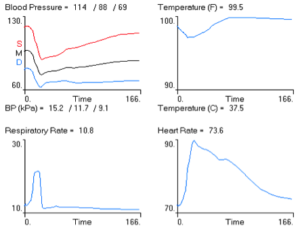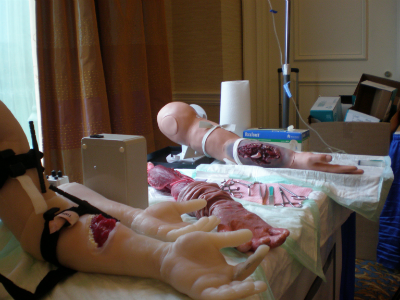
Partial Task Training Arm (PTT-ARM)
U.S. Military Operations identified that there was a need for effective trauma training. IVIR recognized the need for a more life-like part-task trainer and created a upper extremity human replica for trauma training.

Sponsor:
U.S. Army Research, Development and Engineering Command (RDECOM-STTC)Award Date:
April, 2009Contract #:
W91CRB-09-C-0500Status:
DeliveredThe Partial Task Training IV/Orthopedic/Tourniquet Arm (PTT-Arm) research and development (R&D) project was to develop an advanced orthopedic, physiologically modeled, high fidelity human arm partial task trainer, capable of pronation and supination with end effectors to execute three functional areas:
- Orthopedic injury immobilization
- Hemorrhage control
- IV administration
The development began with realistic anatomical designs, including:
- Realistic bone structure
- Realistic muscle groups
- Realistic arteries and veins
- Hemorrhage control system
- Fascia layer
- Realistic overlaying skin (replaceable)
- Breakaway wrist to simulate a broken wrist if too much force is applied during extrication

Physiological Models
The PTT-Arm also incorporated physiological models derived from the University of Mississippi’s open source physiological modeling program, HumMod. The models are displayed on a tablet computer and are designed to show the effects of hemorrhage and IV fluid resuscitation, including heart rate and blood pressure changes.

All three versions effectively satisfied a need.
Three versions of the PTT-Arm were created:
- Version A – a surgical version made with bio-realistic, live-tissue replacement materials
- Version B – a durable version that allows for rough handling and can be attached to a mannequin
- Version C – an advanced mechanical version that includes multiple electro/mechanical end effectors and fits between versions A and B in regards to realism and durability, respectively





